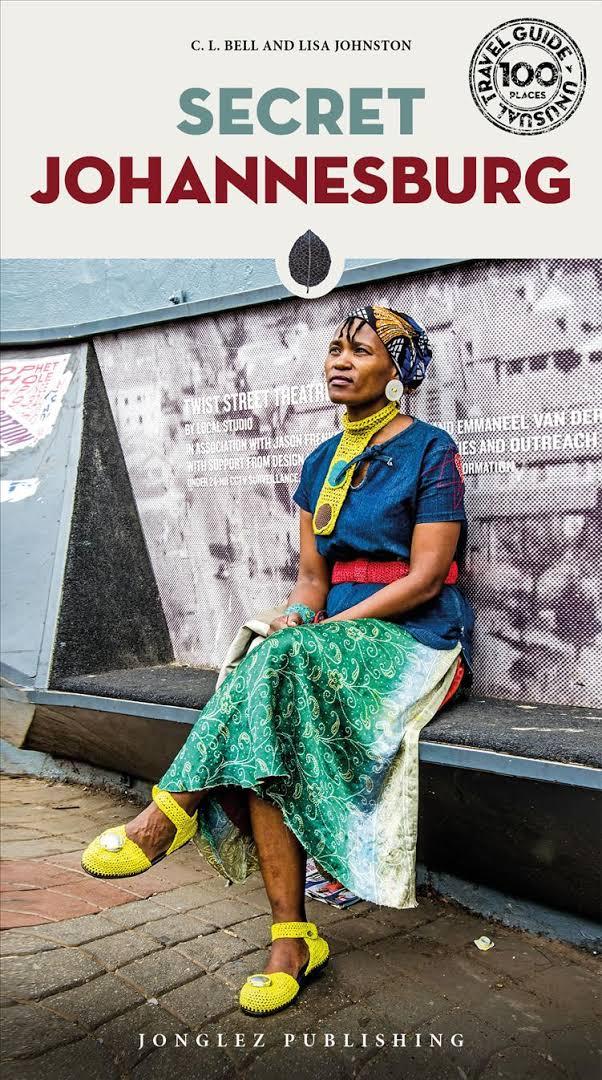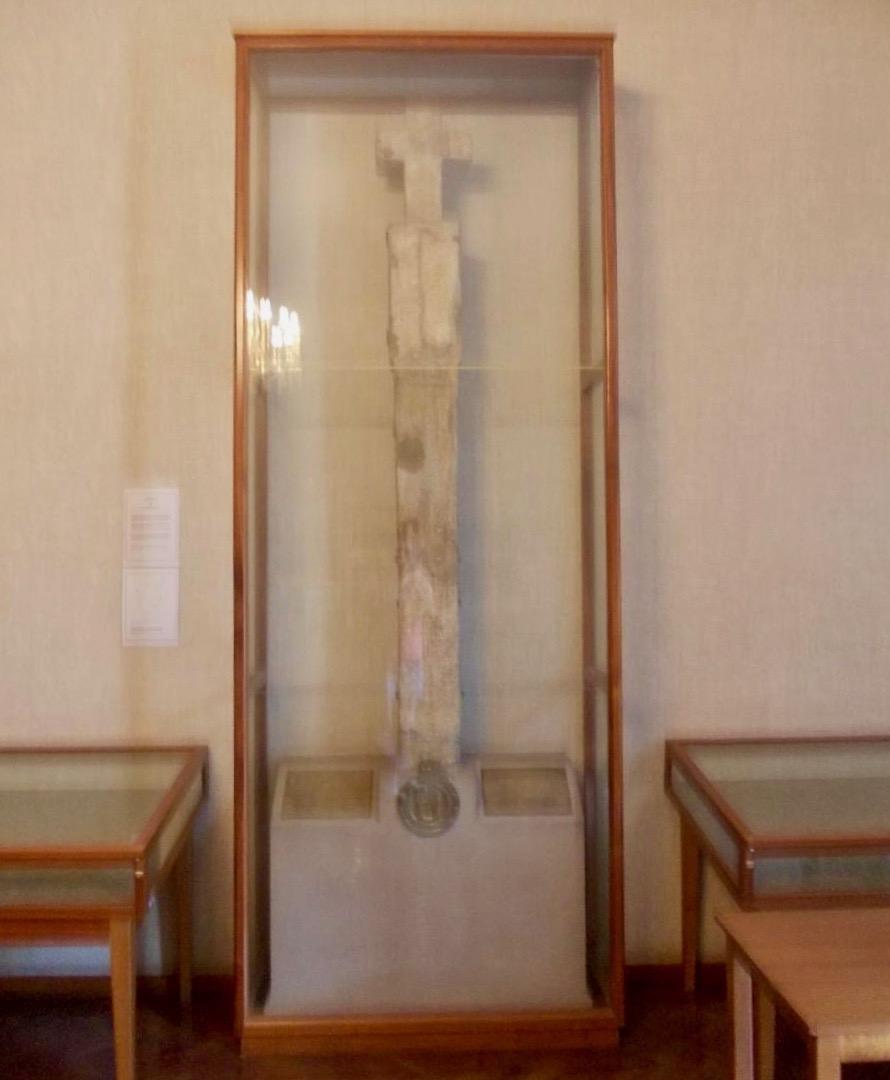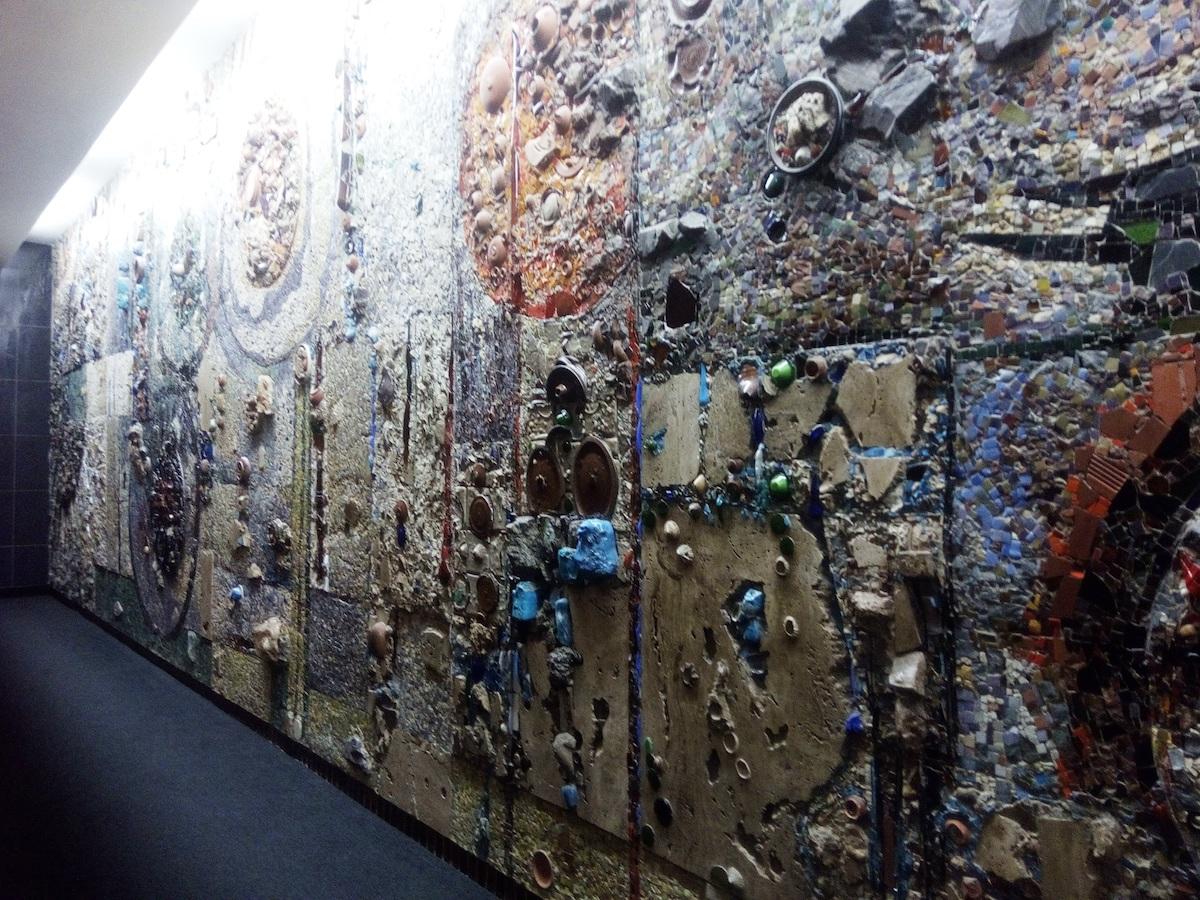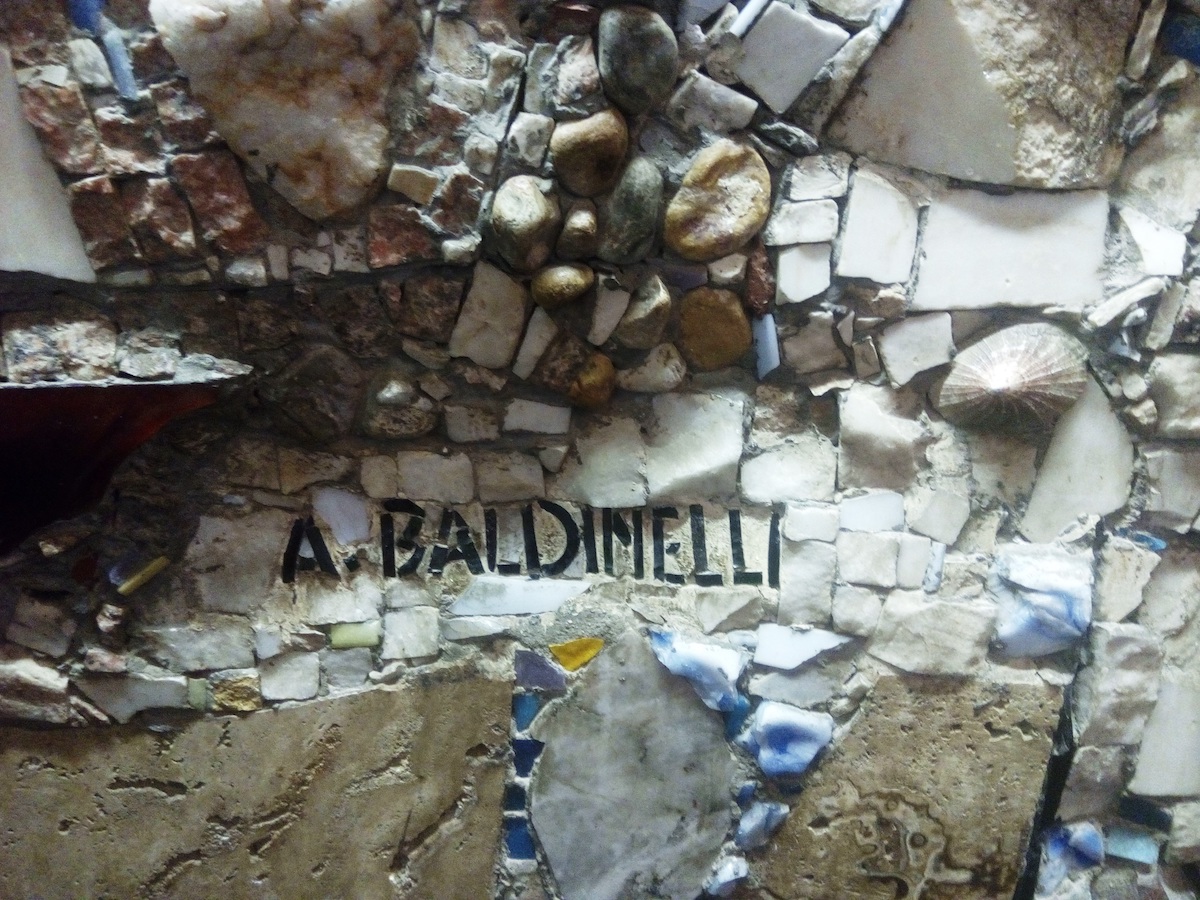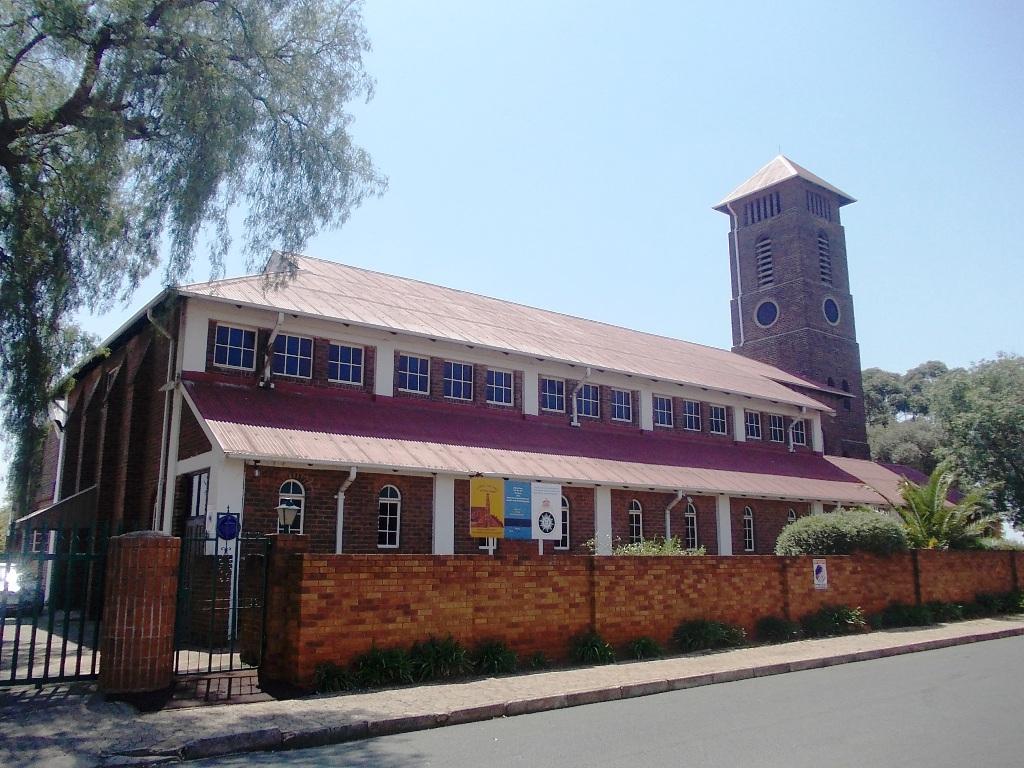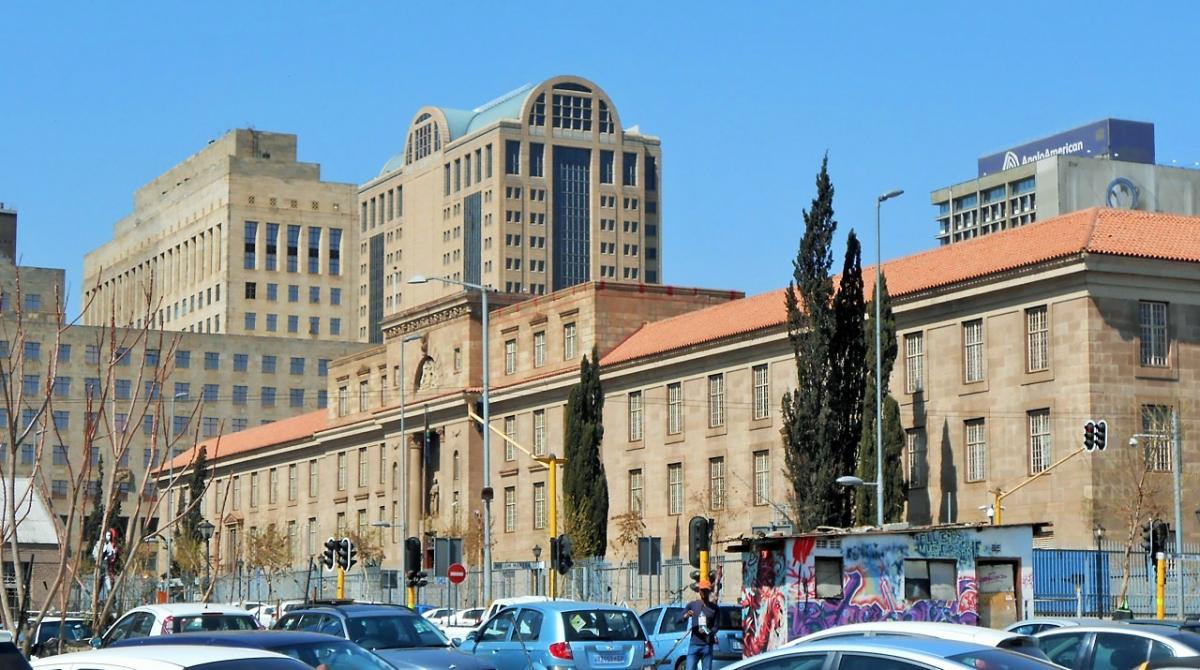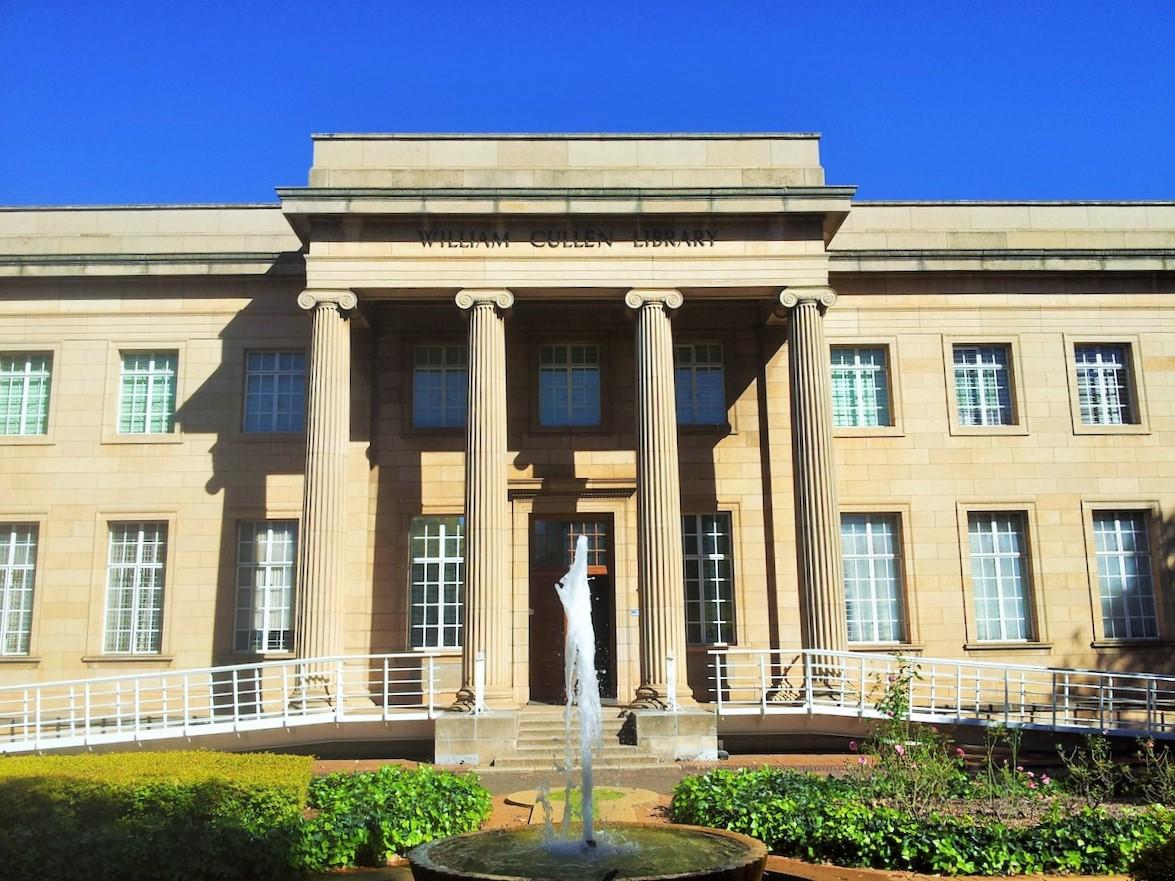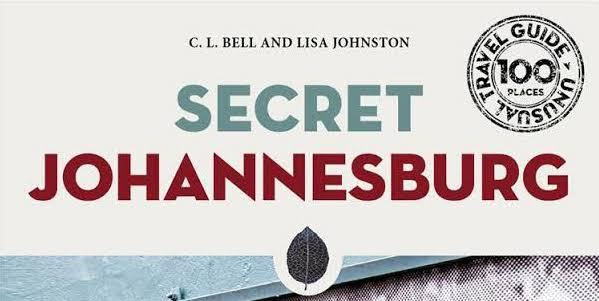
Secret Johannesburg is a small book with a big punch. The intriguing title lures the city enthusiast to acquire it, pop it in a pocket or a handbag and take it on a journey to discover Joburg's little known treasures. Complete with nifty maps, this guidebook with a difference unearths Johannesburg’s amazing hidden objects, spaces, places, artworks, geology, water features, trees and museums.
Book Cover
Published by Jonglez publishing in Paris, this book puts secret Johannesburg on an international map. Joburg now joins Barcelona, London, Rio, Rome, Venice, Vienna, Washington DC and a few dozen other cities (including Cape Town) in having its secrets revealed. There are cheerful bright photographs of each “secret”. Discover graffiti, protest treasures, the transport archive, the Diaz cross, art collections, outdoor sculptures, urban gardens, champion trees and so much more.
Diaz Cross at the Cullen Library at Wits (The Heritage Portal)
How does this book compare with Hidden Johannesburg, published in 2016 which had an emphasis on the grand heritage homes and places of the city? Whereas Hidden Johannesburg is a coffee table book with lavish production and extraordinary professional photographs aimed at the armchair aficionados of the city, this little guide is much more of a fit for the glove box of a car for taking on your travels to discover these places.
I liked the efforts made to blend the heritage treasures of different cultures and the reach from Lonehill to Soweto and beyond. The selection of secrets and treasures celebrates the post-apartheid world.
It’s a very immediate guide with a journalistic flair; the authors capture conversations with custodians of treasures. Their book is based on interviews. It’s all oral history told to them by the people of Johannesburg. They have no references and no authoritative documentary sources for their information.
The format of the little book is geographical, with the city divided into four areas covering the old Downtown, the suburbs in all directions as well as Greater Joburg.
Unfortunately for a small book, the price is steep. The recommended retail price is R299. Hidden Johannesburg is far better value for money, but then the price tag matches prices charged elsewhere.
There should have been better proofreading too. When you pay a top price for an international product one expects perfection. A few errors jumped out at me:
- Juma Masgied society (sic) should be Masjid (p 27);
- Transnet’s mystery archive (p 50) tells the story of the Railway archive but unfortunately the authors' lack of contextual knowledge leads to a two page description that is as mysterious as the mystery archives they describe. Which government linked railway company is being discussed – NZASM, or the Cape Government Railways, or the later Central Railways or the Natal Railways (all of which ultimately became part of the SAR and H)?
- David Russell should be spelt with a double L (p 93);
- P 78-9 covers Baldinelli's altar mosaic of our Lady of the Wayside and offers a cross reference to the Baldinelli mosaic at the Hyde Park shopping centre (outside the cinema toilets). The reference given is to page 118 but it should be page 114. Page 118 is where you will find ref to the Cecil Skotness and not the Baldinelli. The Baldinelli mosaic (yes you will find it on the way to the loo) is a secret worth shouting about because a vending machine now blocks the full view of this glorious work.
- Braunau is spelt two different ways (p 69);
- Quote from Clive Shepherd should be " lad" not " land" (p 85). Comment that the Club's first home was at the agricultural grounds of the Rand Easter Show is not an accurate description of the situation. Note the Witwatersrand Agricultural Society ran the Rand Easter Show, there were no "agricultural grounds". Wits University did not appropriate the land but rather purchased the balance of the lease.;
- Milner did not raise the Scottish Horse, the regiment was raised by the Marquis of Tullibardine at the request of Lord Kitchener (p 101);
- the funding for the restoration of the Yukon windows came from the National Monuments Council (p 89);
- the Huddleston Church of Christ the King was not simply a recreation hall, it was bought by the Pinkster Protestant Church and Huddleston could not have returned after his death but perhaps his ashes came back to Sophiatown (p 135);
- the head of the Zonderwater POW Camp was Captain H F Prinsloo (Sonneband is the wrong name) (p 145);
- Mary Oppenheimer was the one and only daughter of Harry and Bridget Oppenheimer and should not be described as "one of the Oppenheimer daughters" (p 151). Note Charles Engelhart was an American mining and metals magnate with international investments and a philanthropist and was not the Anglo-Americanrepresentative in South Africa. He is better described as someone who had close relationships with Harry Oppenheimer and Anglo American.
- It’s a bit of a stretch of mythmaking to place Gandhi in the Harvey Nature Reserve (try Mountain View, 8 Grove Road, another unknown Kallenbach home, which was called “The Tents” (p 186);
These small points are important for anyone writing and publishing on Johannesburg heritage. It is a real pity that small errors and a failure to double check facts, provide dates, do some research mar this book with an excellent core idea.
Baldinelli Mosaic at Hyde Park Shopping Centre (Kathy Munro)
Baldinelli Signature (Kathy Munro)
Church of Christ the King (The Heritage Portal)
This little book implicitly raises the question of access to these secret treasures. Surely if the idea is to reveal the secret, then the secret should also be accessible. Why bother to give high profile publicity to a garden (St Christopher) where no address is given and it is only open on one day in the year, a vague some day in October. If this is meant to be a useful guide book there should be a clear address, opening hours and contact details or a website.
Because the authors appear to have done no original research, they also miss critical elements in their stories. One example – the Sons of England World War I Memorial Cross from Patterson Park is shown out of context; the authors fail to explain that Patterson Park is being recreated and that the actual war memorial shrine is currently in the midst of a construction site but is fenced off. The point about this cross is that it came from a specific battle within a battle, namely the Butte de Warlencourt which was part of the Battle of the Somme. It was not only Transvaal men who fought on and for the Butte. Note the 3rd Regiment comprised troops from the Transvaal and Rhodesia but they were not called the Transvaal Regiment. I am irritated when these sort of inaccuracies creep into descriptions. The wooden cross is meaningless unless the history is properly related.
The story about the masterpieces in the Johannesburg Magistrates Court, mentions the Pierneefs but misses the important works by Colin Gill, who came to South Africa to paint these murals and who also contributed one of the large murals in the William Cullen Library at Wits (the three great paintings in the Reading Room would have been on my list of Secret Johannesburg).
Johannesburg Magistrates Court (The Heritage Portal)
William Cullen Library (The Heritage Portal)
The story on the Bernberg dresses astounds because there is not a dress in sight. Johannesburg actually lost its Bernberg Museum of costume (an offshoot of the Africana Museum) when it demolished the Forest Town home of the Bernbergs. We ought to hang our heads in shame that this heritage treasure disappeared. I once gave a collection of gloves from my family (inherited by me through three generations) to this museum - well it was never seen again! What a joke to tell us that the collection is comparable to the V&A Collection. Dream on - our fashion history collection is truly hidden. Incidentally the granddaughter of Queen Victoria who may have worn an outfit in the collection, was not Princess Anne but Princess Alice, Countess of Athlone.
The arrangement of the book is not always logical as Fietas is not in Sophiatown, the Parks or in Houghton and the Linksfield home of L Ron Hubbard is hardly in Greater Johannesburg alongside Benoni. Johannesburg has so much to offer that I wondered why places such as Benoni, Heidelberg, Vereeniging and Sharpeville feature in a book on Johannesburg secrets, especially when other choice Johannesburg treasures failed to make the cut.
In summary, this is an attractive addition to a Johannesburg library but it is not without flaws. It is expensive but it is cheerful, bright, colourful and looks good. It is a get up and go and explore guide for the moment; it is also a provocative stimulus to compiling your own list of secrets of the city. It is definitely fun to think about and jot down the hidden gems in your own world.
Thank you to the publisher for supplying a review copy.
Johannesburg Heritage Foundation members can buy a copy at the JHF office (special discount available while stocks last). Contact Eira Bond - mail@joburgheritage.co.za.
Kathy Munro is an Honorary Associate Professor in the School of Architecture and Planning at the University of the Witwatersrand. She enjoyed a long career as an academic and in management at Wits University. She trained as an economic historian. She is an enthusiastic book person and has built her own somewhat eclectic book collection over 40 years. Her interests cover Africana, Johannesburg history, history, art history, travel, business and banking histories. She researches and writes on historical architecture and heritage matters. She is a member of the Board of the Johannesburg Heritage Foundation and is a docent at the Wits Arts Museum. She is currently working on a couple of projects on Johannesburg architects and is researching South African architects, war cemeteries and memorials. Kathy is a member of the online book community the Library thing and recommends this cataloging website and worldwide network as a book lover's haven.

